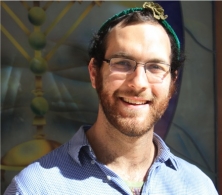The Jewish Innovation
-Ben Yehuda, the founder of Modern Hebrew
-Agripas, a King from Biblical Times
-Bruria, a prominent female figure in the Talmud
They all have streets named after them in Jerusalem!
________________________________________________
Festival Rabot Hadrachim is a new street festival based on the names of Jerusalem’s streets.
Jerusalem artists are creating unique pieces that explore and bring to life these historic figures and their message to the Jewish people.
Imagine interactive street theater about the age old conflict between Hillel and Shamai, or modern art based off of Ze’ev Rabin, the creator of the famous “Visit Palestine” poster.
________________________________________________
We are using multimedia to combine creative expression with Jewish identity in a uniquely Jerusalem event.
Festival Rabot Hadrachim will be a fun night out and leave locals and tourists thinking about their connection to the Jewish people and about the streets they walk on every day.
Our artists are the most important key to fulfilling this goal.
The Impact
Festival Rabot Hadrachim will:
-Push the artists to incorporate deeper levels of Jewish identity into their work.
-Bring the streets of Jerusalem to life with interesting content
-Embed street festival with Jewish history
-Be another important influx of work for a growing market
-Engage every kind of Jew
-Add insight into the every day lives of Israelis that makes it fun to talk about our history
-Encourage Jewish unity through shared, relatable, stories
What Will You Do with the Money?
One of our biggest cost is paying the artists!
The first piece will be on Havatzelet street (this was a Chasidic newspaper in the late 1800’s that supported early zionist agriculture projects). The artists will find old newspapers, and create a mock newspaper, reflecting on older articles and how they affect modern times. Two performers will then hand it out on the street.
The other is on Helenei Hamalka street (she was the queen of of Abedei (northern Persian area) in the first century CE, she was a convert to Judaism, and the Talmud comments in multiple places how she brought many gifts to the Temple.) We are working with the Estare Project, which learns about different women through Biblical and Talmudic times. They are presenting a mixed media piece exploring the Mishnah’s description of Helena Hamalka through the lens of femininity.
There are many other costs associated with putting on this project and future festivals:
-Technology rentals for artist pieces
-Marketing
-License and Security
-Stipends for Staff
With your help we can support a burgeoning artist community and transform the streets of Jerusalem into an artistic conversation!

